Dušan Nemes: Redox-dependent protein S-glutathionylation governs azacitidine sensitivity and resistance in AML
Check out our new paper exploring novel aspects of hypomethylating
therapy with azacitidine, its impact on the redox proteome of leukemia
cells, and how resetting redox homeostasis relates to azacitidine
resistance.
Read the full paper here:
https://www.sciencedirect.com/science/article/pii/S2213231725004719?via%3Dihub

Knowledge on tour
13th Congress of the Czech Society for Mass Spectrometry
On November 19–21, 2025, we participated in the excellent 13th Congress
of the Czech Society for Mass Spectrometry, which showcased the latest
applications of mass spectrometry across a wide range of research areas.
Our team was honored to present two posters, and we are proud to share
that one of them won first place in the poster competition.
🎉 Congratulations to Michaela Myšáková for this outstanding achievement!



Knowledge on tour
4th Prague Symposium on Cancer Metabolism
On October 13–14, 2025, we participated in the inspiring 4th Prague Symposium on Cancer Metabolism, focusing on the metabolic dependencies of cancer cells.
Our team was honored to deliver two talks and present one poster. We are proud to share that our poster was selected among the three best posters of the conference.
🎉 Congratulations to Michaela Myšáková for this outstanding achievement!


Tomáš Stopka: Control of myeloid lineage fidelity and response to stimuli by ISWI-enforced nucleosome phasing
Control of myeloid lineage fidelity and response to stimuli by ISWI-enforced nucleosome phasing. Polletti S, Melià-Alomà J, Pileri F, Di Lena CA, Piccolo V, Cuomo A, Stopka T, Gualdrini F, Natoli G. Immunity. 2025 Sep 25:S1074-7613(25)00413-3. doi: 10.1016/j.immuni.2025.09.002. (IF 26.1) [PubMed] JCR/JCI Q1/D1


XXII. národní workshop mnohočetný myelom, Mikulov 2025
Česká myelomová skupina - diskuse nad novými diagnostickými metodami pro klinickou praxi v oblasti Mnohočetného myelomu ke zhlédnutí ZDE.
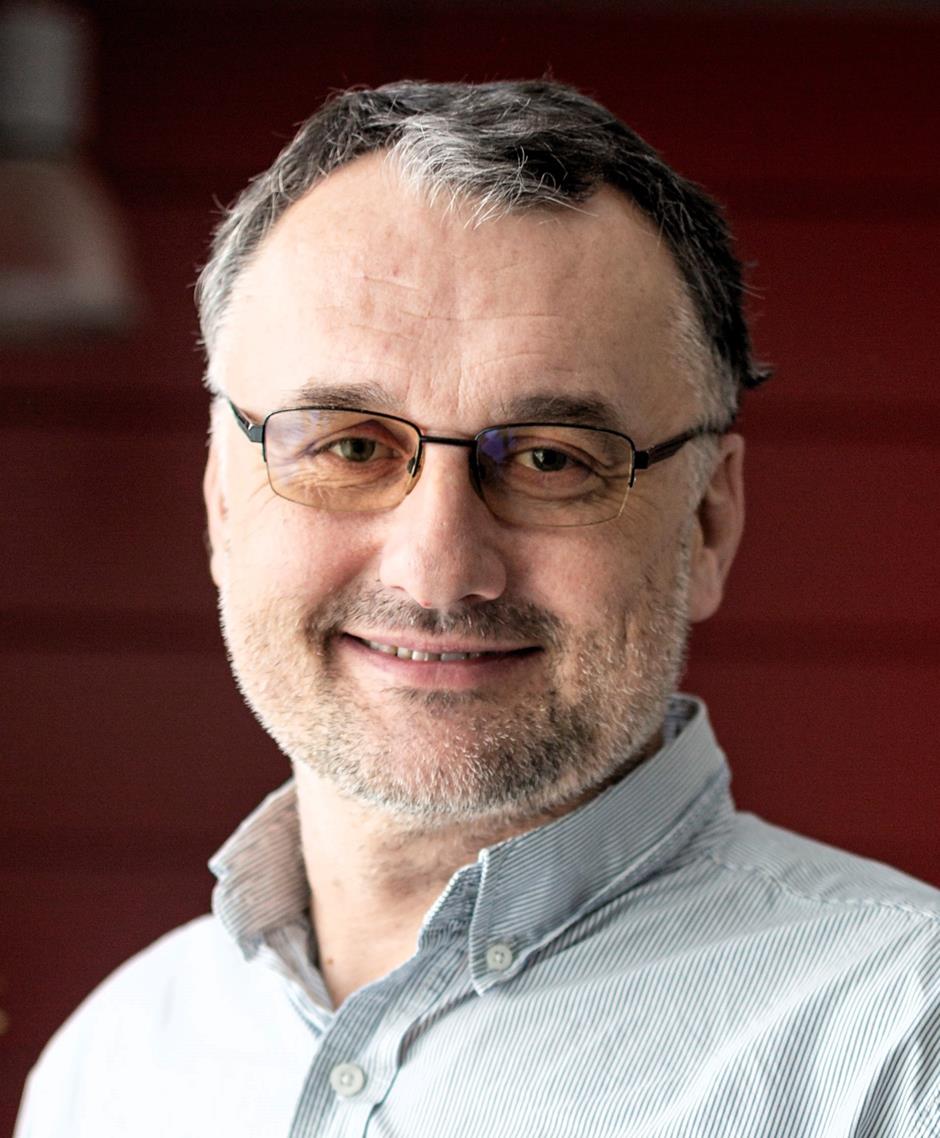
Knowledge on tour
On March 16-19, 2025, we presented our data on "Proteogenomic characterization of leukemia cells resistant to combined therapy with Azacitidine and Pevonedistat reveals activation of autophagy via the SQSTM1-NRF2 axis" at the world conference Acute Leukemias XIX in Munich, Germany.


Congratulations to Dušan Němec
Dusan received a grant from the Grant Agency of Charles University (GAUK) on the topic "Impact of inhibition of the antioxidant system of leukemia cells on combined therapy by azacytidine and venetoclax".
Opening for a Postdoctoral Fellow in Hemato-Oncology
The Hematology Laboratories of the First Faculty of Medicine, Charles University at BIOCEV have an opening for a Postdoctoral Fellow in Hemato-Oncology.
For more information click HERE
Investigating Resistance to 5-Azacytidine and Venetoclax in PDX Models of MDS/AML
Investigating resistance to 5-Azacytidine and Venetoclax in PDX models of MDS/AML. Bašová P, Minařík L, Magalhaes-Novais SC, Balounová J, Zemanová Z, Aghová T, Špaček M, Jonášová A, Pimková KG, Procházka J, Sedláček R, Stopka T. Front Oncol. 2025 Jan 7;14:1414950. doi: 10.3389/fonc.2024.1414950. (IF 3.5, Q2) [PubMed]
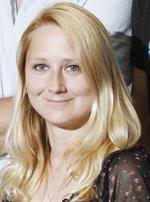
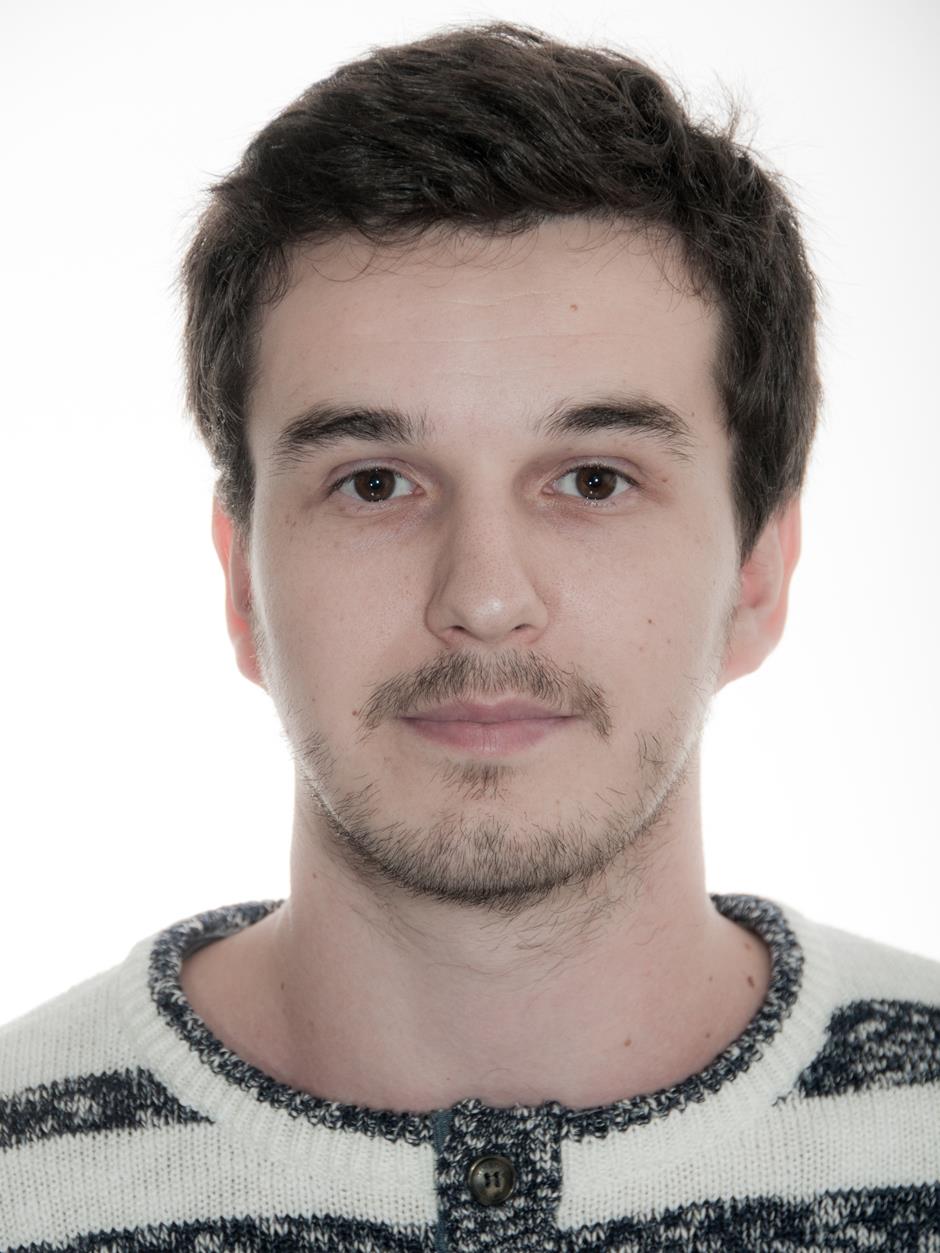


Congratulations to Dušan Němec
Dušan was awarded 7500 EUR with a travel grant from the European
Hematology Association for his 6-month internship at Stem Cell Center,
Lund University in Sweden.
https://ehaweb.org/research/grants/recipients/2024-winners/

Knowledge on tour
On 6.10.-10.10.2024 we presented our newest findings with the topic:
"Activation of autophagy via the SQSTM1-KEAP1-NRF2 axis induced by
Pevonedistat provides a temporary readjustment of MDS/AML cells leading
to the development of resistance" at the world congress of American
Society of Hematology ASH2024 in San Diego, USA.
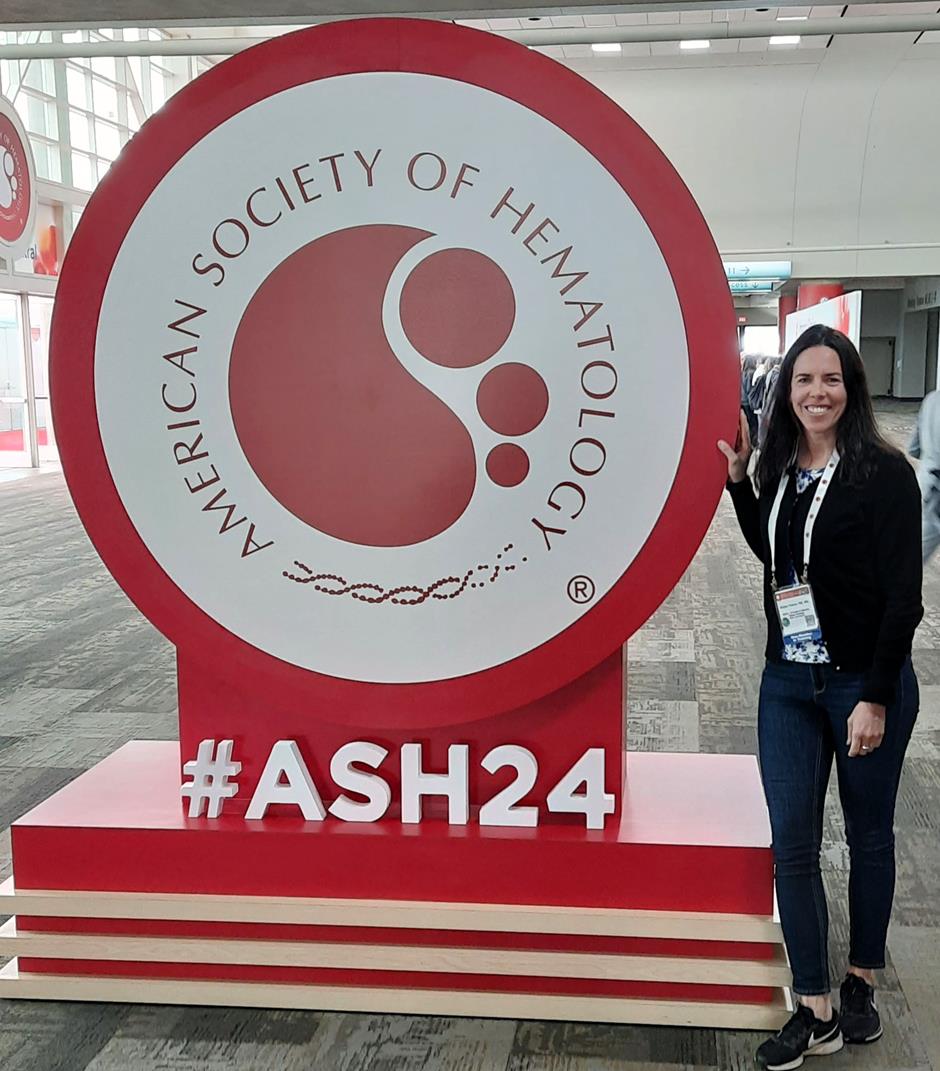
Knowledge on tour
Conference of the Czech Society for Mass Spectrometry
On 30.10-1.11.2024 we visited the conference of the Czech Society for Mass Spectrometry. Michaela won the prize for the best poster and Kristýna was elected to the committee of the Czech Society for Mass Spectrometry.



Tomáš Stopka: SMARCA5-mediated chromatin remodeling is required for germinal center formation
SMARCA5-mediated chromatin remodeling is required for germinal center formation. Stoler-Barak L, Schmiedel D, Sarusi-Portuguez A, Rogel A, Blecher-Gonen R, Haimon Z, Stopka T, Shulman Z. J Exp Med. 2024 Nov 4;221(11):e20240433. doi: 10.1084/jem.20240433. (IF 12.6) [PubMed] JCR/JCI Q1/D1
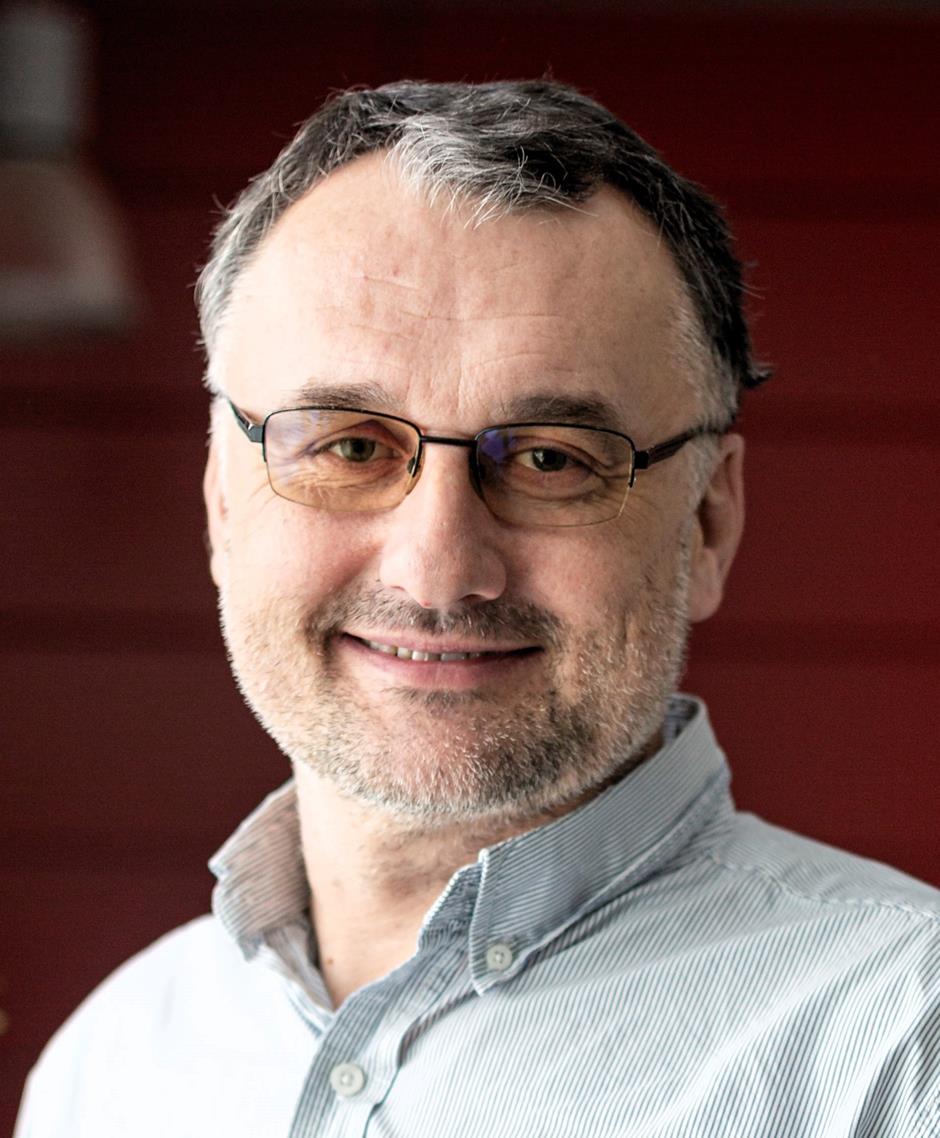
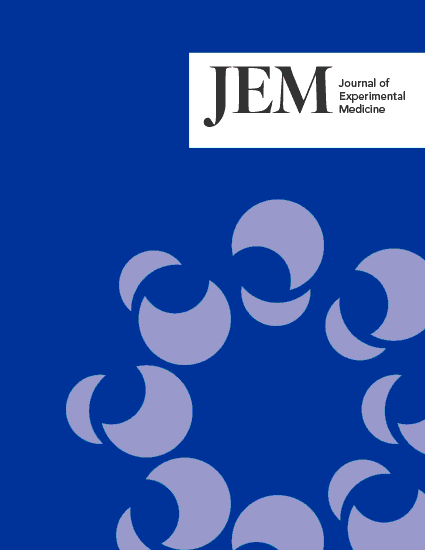
Knowledge on tour
23rd Human Proteome Organization World Congress
From 20.10.-24.10.2024 we went to present our data at the world proteomics conference in Dresden HUPO 2024.
Congratulations to Dušan Němec
Dušan was awarder with a travel grant from the Proteomics Section of the Czech Society for Biochemistry and Molecular Biology Czproteo to attend the Brixen Proteomics Summer School.
Dušan actively participated in the Brixen Proteomics Summer School organized by the European Proteomic Association from 28 July - 3 August 2024, where he was awarded for the best poster.
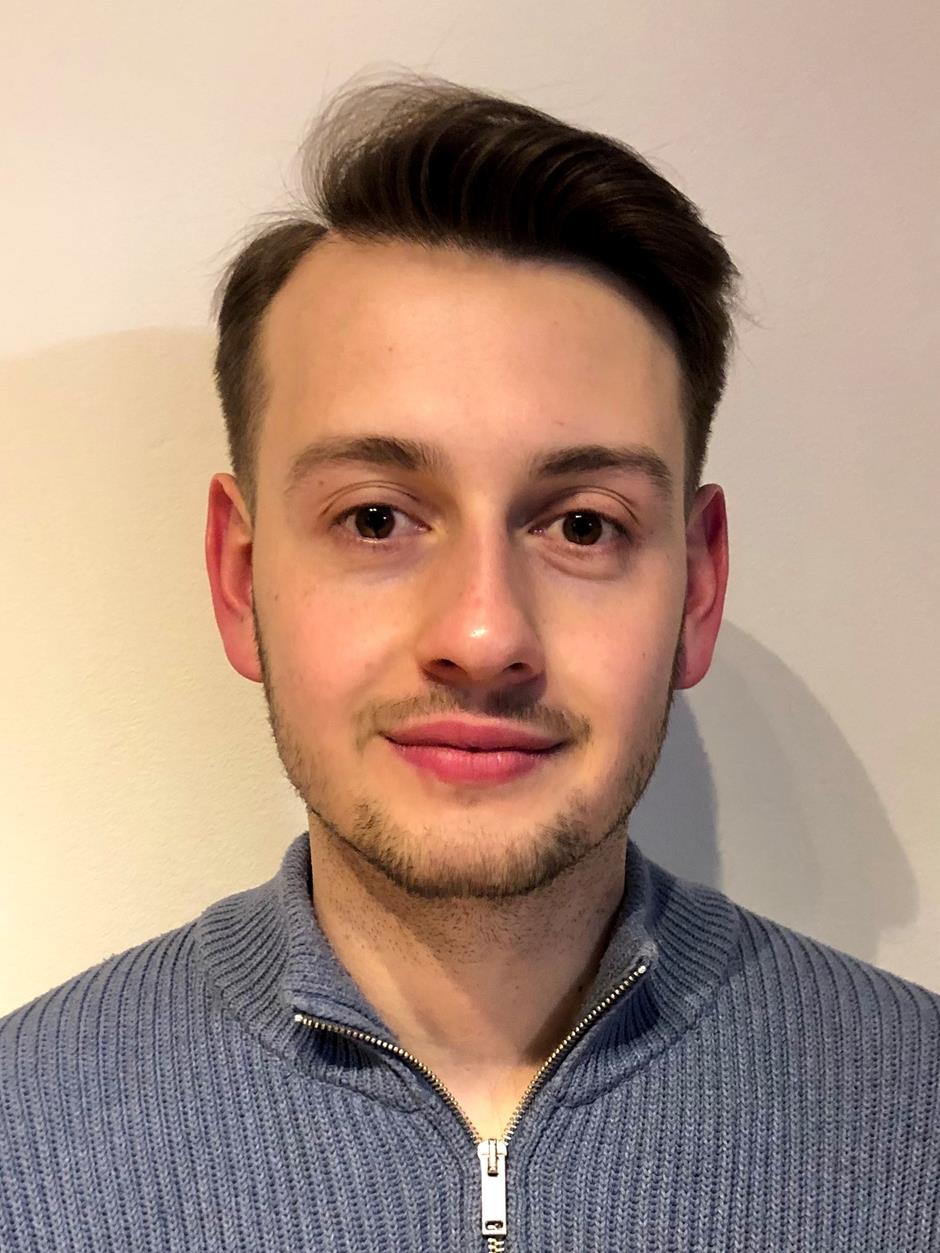
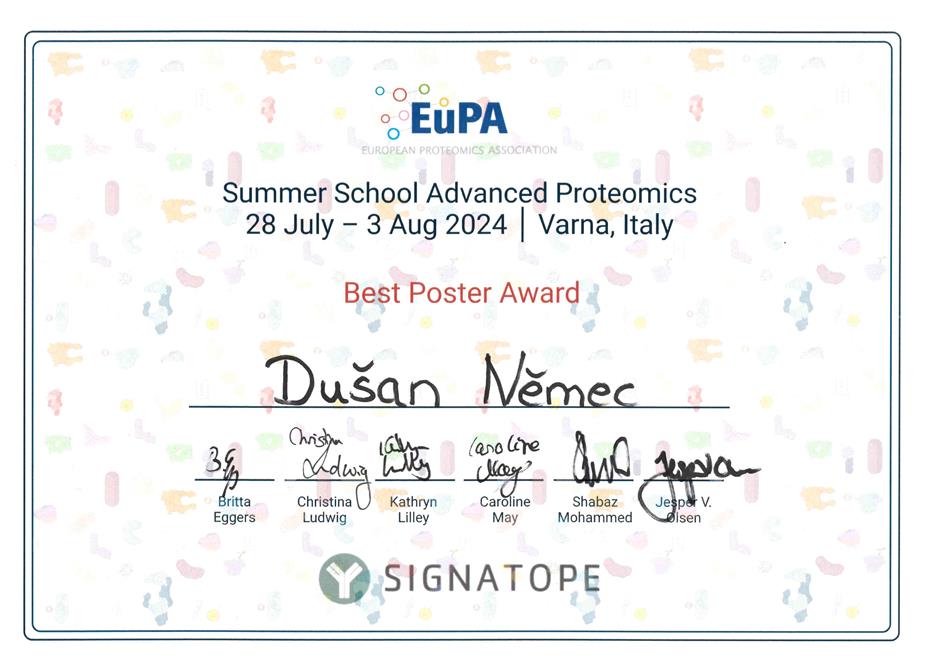
Tomáš Stopka: Experience with luspatercept therapy in Frontiers in oncology
Experience with luspatercept therapy in patients with transfusion-dependent low-risk myelodysplastic syndromes in real-world clinical practice: exploring the positive effect of combination with erythropoietin alfa. Jonasova A, Sotakova S, Belohlavkova P, Minarik L, Stopka T, Jonas JJ, Aghova T, Zemanova Z. Front Oncol. 2024 Oct 2;14:1398331. doi: 10.3389/fonc.2024.1398331. (IF 3.5) [PubMed]

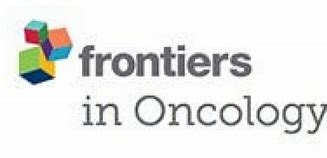
Congratulations to Michaela Myšáková
Michaela successfully defended her master‘s thesis: Investigation of the role of the KEAP1-NRF2 antioxidant pathway in the therapy of secondary acute myeloid leukaemia and completed her master‘s studies at the Faculty of Science of Charles University.
Michaela has been accepted for PhD studies at the Faculty of Science of Charles University in the field of Molecular and Cell Biology, Genetics, and Virology. Michaela will be studying the role of proteome dynamics in the progression and therapy of blood cell disorders.
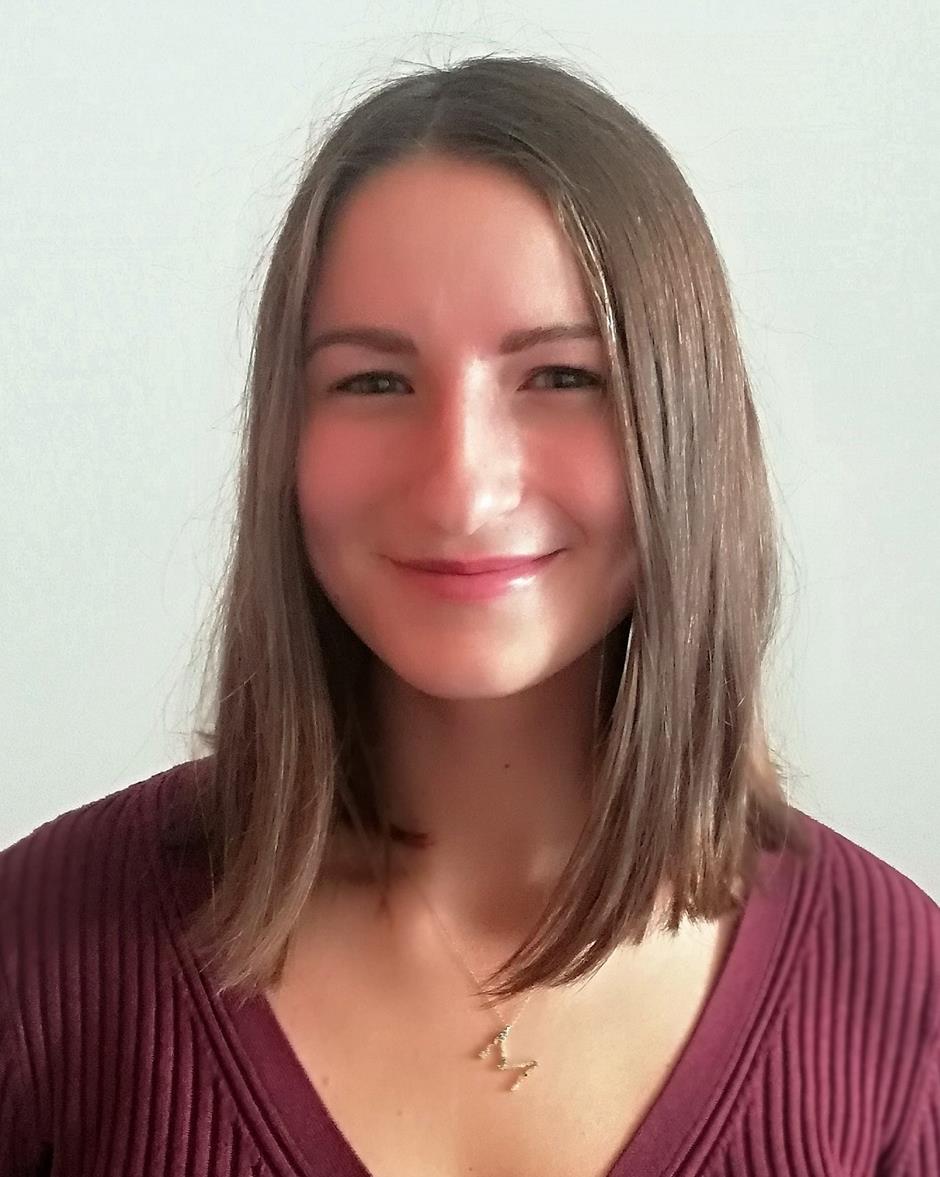
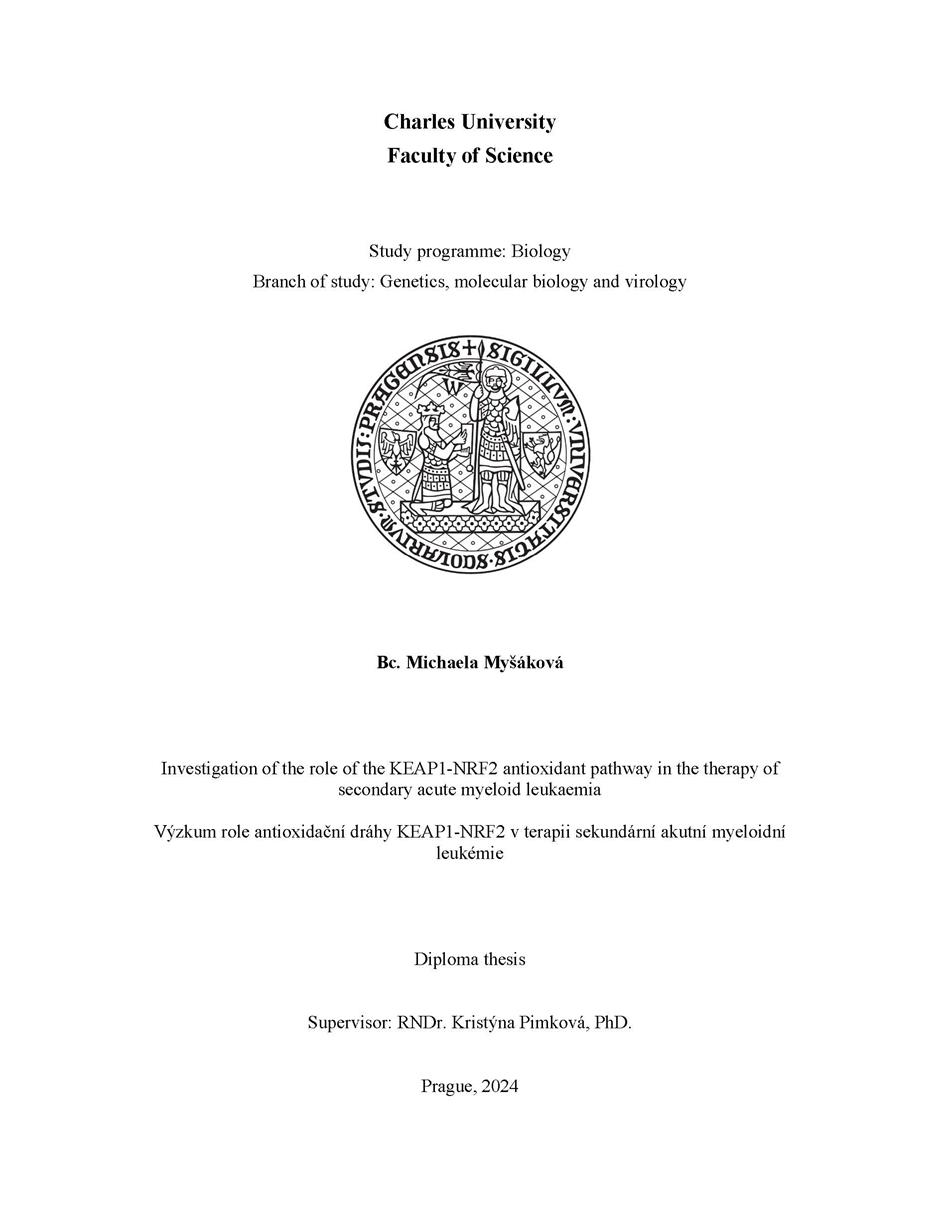
Congratulations to Tereza Turková
Tereza successfully defended her doctoral thesis: Role of tissue-specific expression of the ISWI protein Smarca5/Snf2h in murine hematopoiesis
and completed her postgradual studies at the Faculty of Science of Charles University.
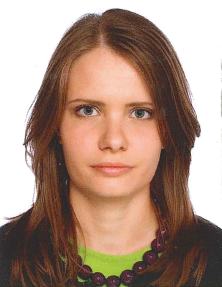
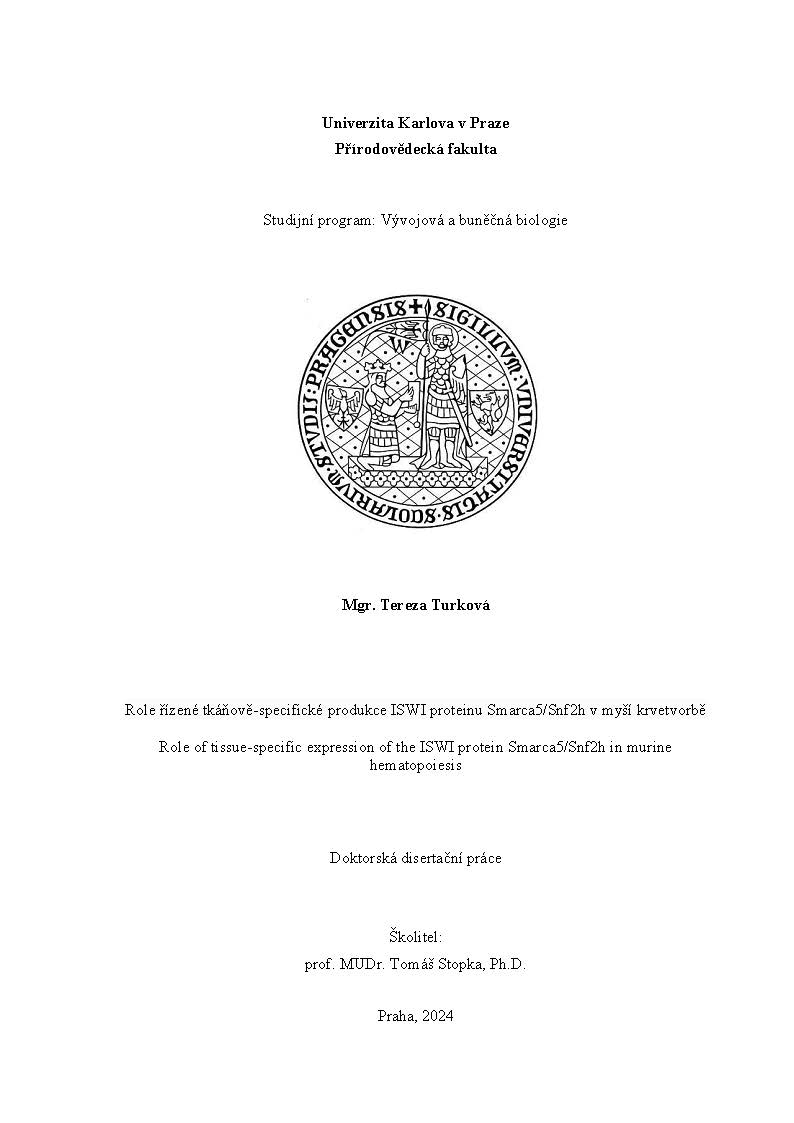
Kristýna Gloc Pimková: Comprehensive proteomic study in Heliyon
Impact of anesthetics on rat hippocampus and neocortex: A comprehensive proteomic study based on label-free mass spectrometry. Astapenko D, Vajrychova M, Fabrik I, Kupcik R, Pimkova K, Tambor V, Radochova V, Cerny V. Heliyon. 2024 Mar 5;10(6):e27638. doi: 10.1016/j.heliyon.2024.e27638.


Hematopoietic stem cells use chromatin-remodeling factors for specific processes: the story of Smarca5
Turkova T, Kokavec J, Zikmund T, Dibus N, Pimkova K, Nemec D, Holeckova M, Ruskova L, Sedlacek R, Cermak L, Stopka T. Differential requirements for Smarca5 expression during hematopoietic stem cell commitment. Commun Biol. 2024 Feb 29;7(1):244. doi: 10.1038/s42003-024-05917-z.

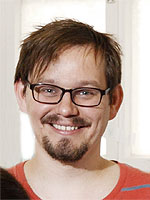

![]()
Mouse transgenic research suggests that lymphocyte development requires a robust chromatin remodeling. Turkova et al. found that although the chromatin-remodeling enzyme known as Smarca5 was thought to be a general factor, lymphocyte development in stem cells is most sensitive to its decrease.
By Tereza Turkova & Tomas Stopka
Figure legend: Hematopoietic stem cells in bone marrow regulate the expression of the epigenetic regulator Smarca5, which influences the development of blood elements through ATP-dependent effects on nucleosome architecture. Our data show that the development of lymphoid progenitors of both the B and T lineages is most dependent on Smarca5 levels, erythropoiesis is less dependent, while a very low level of the studied ISWI ATPase is sufficient for myeloid cell development. Created with BioRender.com.
The production of blood cells relies on coordinated regulation of gene expression, timing of the cell cycle, and suppression of inappropriate processes by apoptosis. Like any stem cell, the hematopoietic stem cell deals with the balance between stemness and differentiation, but also with the quantitative requirements for the production of different elements at specific stages of development and during everyday situations that might include bleeding or infections. The different decisions in the cell nucleus of stem cells are related to the structure of the DNA, which is wrapped in a bun of histone proteins. Different critical sequences have to be made available, and this is done by an enzymatic motor that releases DNA from the histone octamer, called the nucleosome, with the expenditure of energy, creating a region of freely accessible DNA, while other unnecessary DNA sequences are twisted like a thread around a spool. The unwinding of the DNA strand from the nucleosome is called the process of chromatin remodeling. It is generally accepted that stem cells have very little gene expression and replication, and thus we were interested in how dependent the various blood subtypes are on the function of the chromatin remodeling enzymatic engine in stem cells during their early differentiation. Specifically, we tested how the ISWI ATPase SMARCA5 (SNF2H), which represents an absolutely essential and unique enzyme, effects the production of lymphoid, erythroid and myeloid cells.
This type of project involves mouse transgenic models that we have gradually developed over the past 20 years. My lab group took up the project around 2005 in Prague, Czech Republic, but the roots go back to 1998 when we cloned the mouse mRNA for Smarca5 and found that Smarca5 is very important for blood production. In 2003, we published with Art Skoultchi (Albert Einstein College of Medicine, Bronx, NY) a mouse knockout for Smarca5 that showed its indispensability for early embryonic development. Further research led to the development of a mouse model of Smarca5 conditional inactivation that demonstrated the importance of Smarca5 for hematopoietic stem cell, lymphoid and erythroid development.
When we used up the possibilities of the knockout mouse and decided to create a conditional transgenic model for Smarca5. Although we created models for human as well as murine Smarca5, a publication now coming out in Communications Biology covers the first results with the transgene for human SMARCA5 entitled: Differential requirements for Smarca5 expression during hematopoietic stem cell commitment. We observed that the transgenic allele only provides about 10% of the expression of the normal allele. Therefore, we crossed the transgenic model with the previous model with a knockout allele to generate a set of supermodels in which the different Smarca5 expression levels exist. This allowed us to show that the hypomorphic (producing lower protein levels) SMARCA5 allele (S5tg) is fully functional and can rescue, in a dose-dependent manner, the gene inactivation phenotypes from previous k.o. projects, i.e. defects in lymphoid and erythroid development. In addition, transgenic Smarca5 binds all canonical complexes that have been incrementally discovered. Once we express low level of Smarca5 in stem cells, we see that progenitors entering lymphoid T and B development are the most sensitive to Smarca5 reduction, while other progenitors are less or not affected (see figure & legend).
To support our hypothesis that SMARCA5 expression level has a direct effect on development at stem cell level, we employed competitive transplantation experiment of transgenic and normal stem cells into normal but also transgenic recipients. Both of these experiments confirmed our hypothesis that it is primarily lymphocyte development that is strongly dependent on Smarca5 levels and that the defect originates in stem cells. Low SMARCA5 levels lead to significant permissiveness of the bone marrow niche for wild type stem cells. Transgenic hematopoietic stem cells were not able to produce lymphocytes, indicating that these lymphoid early progenitors are most sensitive to SMARCA5 levels. You think that's the end of the story? But no. Our current results show that Smarca5 is indeed a very important factor that affects the life of cancer stem cells. Therefore, we are also focusing on the question of how to effectively get rid of these cancer stem cells and one of the mechanisms is to focus on the biology of Smarca5 in this regard.
Article link HEREPoslechněte si videokomentáře z letošní konference HEMATOLOGIE 2024
Co se událo na poli české a světové hematologie? ZDE

Cena kolegia děkana 1.LF UK za excelentní publikaci 2022
Stopka T, Minařík L, Dusilková N, Pešta M, Kulvait V, Špaček M, Zemanová Z, Kalousová M, Jonášová A. G-CSF plus azacitidine versus azacitidine alone for patients with high-risk myelodysplastic syndrome: academic, open label, randomized trial. Blood Cancer J. 2022 Jul 7;12(7):105. doi: 10.1038/s41408-022-00698-2. (PubMed)
Pimkova K, Jassinskaja M, Munita R, Ciesla M, Guzzi N, Cao Thi Ngoc P, Vajrychova M, Johansson E, Bellodi C, Hansson J. Quantitative analysis of redox proteome reveals oxidation-sensitive protein thiols acting in fundamental processes of developmental hematopoiesis. Redox Biol. 2022 Jul;53:102343. doi: 10.1016/j.redox.2022.102343. (PubMed)


EHA 2023 Frankfurt
Comments from EHA2023 in Frankfurt - prof. Stopka and Dr. Pimková (in Czech).
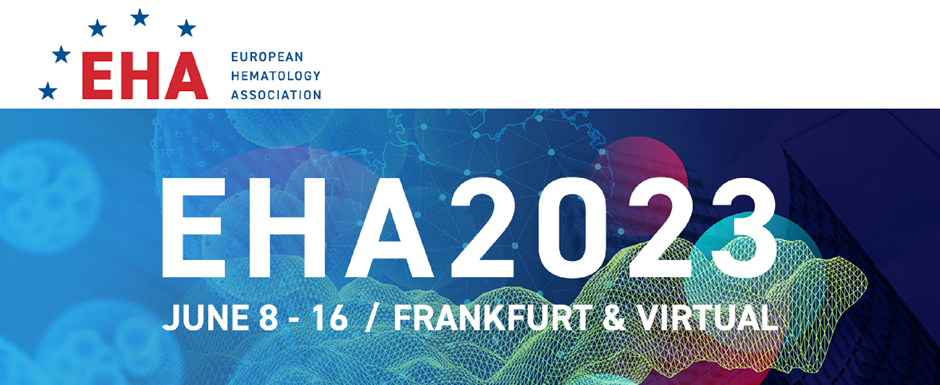
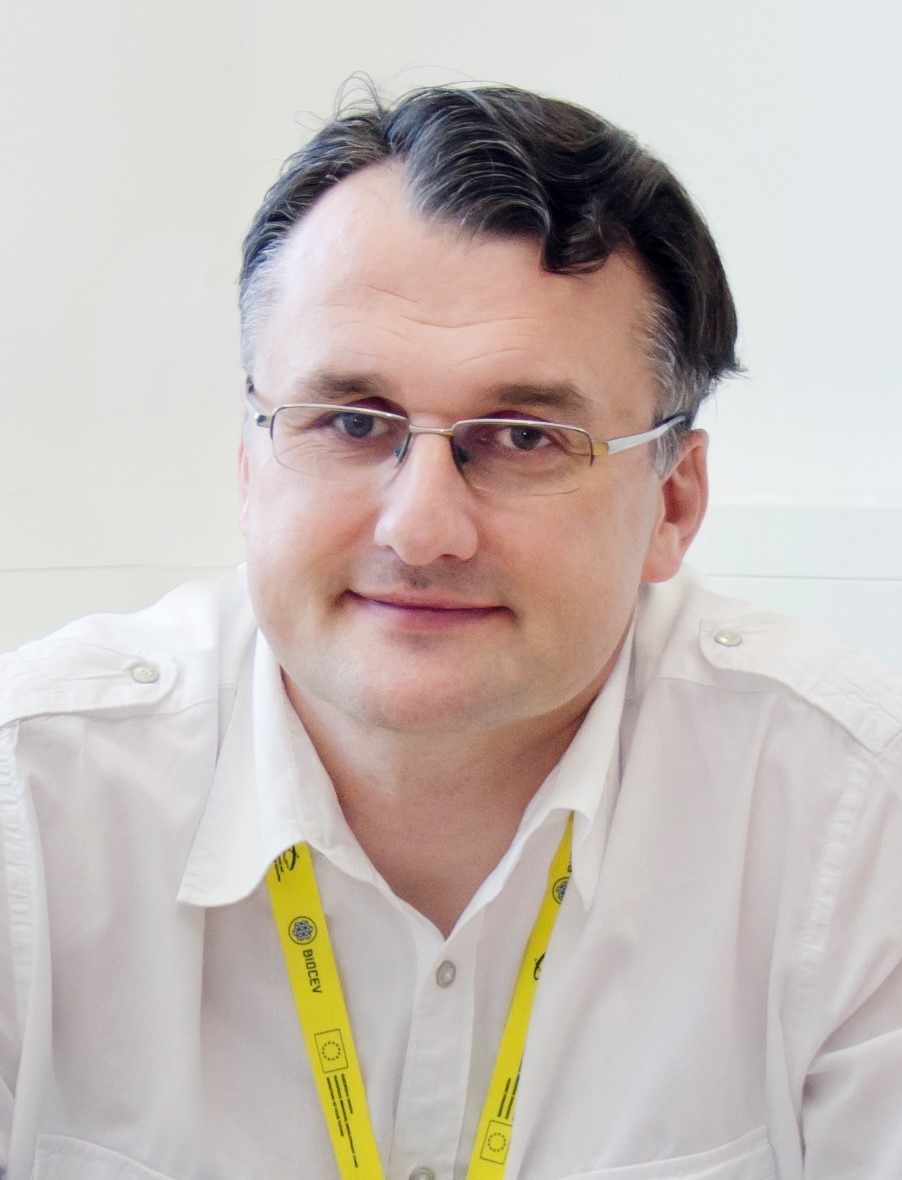

Czech physicians and researchers to prolong the lives of people with leukaemia
A team of researchers and physicians from the BIOCEV Centre, 1st Department of Medicine - Hematology (the First Faculty of Medicine of Charles University) and the General University Hospital in Prague has designed a new approach for the treatment of acute leukaemia. This innovative method involves the combination of two medicines that, when administered together, have significantly prolonged the survival of patients. The clinical trial lasted five years and included 76 patients from the Czech Republic. Information about the new type of treatment was published by the prestigious Blood Cancer Journal from the Nature Publishing Group. At the moment, negotiations are underway to expand the trial to the European-wide level.
Doc. Anna Jonášová and Prof. Tomáš Stopka

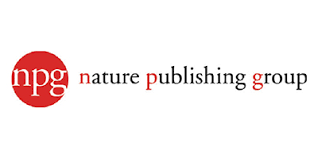
Myelodysplastic syndrome (MDS) is a cancer of the bone marrow causing a low production of non-functioning blood cells. As a result, patients are deficient in both red and white blood cells, which are crucial for the body’s immunity, as well as platelets for blood coagulation. Patients suffering from this anaemia suffer from bruising, frequent internal bleeding and are less resistant to bacterial and viral infections, for example pneumonia.
Depending on the severity of the disease, antibiotics or repeated blood transfusions are given as treatment. In exceptional cases, patients can be treated with a bone marrow transplant. In Europe, four MDS patients per 100,000 people are diagnosed annually. In the Czech Republic, the General University Hospital registers approximately 80 patients each year. The critical phase of MDS is the transition to acute myeloid leukaemia (AML), characterised with a very short survival time.
"The current globally applied treatment for MDS patients during their transition to AML is based on 5-azacytidine, a medicine which was invented in the 1970s by the Czechoslovak Academy of Sciences. Azacytidine is an inhibitor of nuclear enzymes, referred to as DNA methylases, which are genetically and functionally disrupted in leukemic cells, and therefore, their activity helps to eliminate leukemic cells. Based on previous research, much of which has been published in reputable journals, our MDS/AML group has come up with the concept of “differentiation therapy for MDS”. We propose combining azacytidine with another substance called G-CSF, which promotes the formation and development of white blood cells in the bone marrow. We have been able to demonstrate the therapeutic effects of the new combination, and, above all, its safe effect on patients, but we have also been able to prolong their survival by months,” says Prof. Tomáš Stopka, head of research from the First Faculty of Medicine, Charles University, and Biocev. “At the same time, we have discovered that the combination of these agents induced significantly more treatment responses, which is ground-breaking and essential for further research and clinical testing in patients.”
A clinical trial demonstrating the benefit of the new treatment method in high-risk MDS was approved by the State Institute for Drug Control in 2017. The coordinator of the clinical trial was the Head of MDS and AML Treatment and Diagnosis, Doc. Anna Jonášová from the 1st Internal Clinic – Haematology, First Faculty of Medicine, Charles University in Prague: “We had to make a huge effort even before the trial itself was launched as we had to secure an application with the State Institute for Drug Control and have the trial pass through the ethics committees. The proposed therapeutic combination advances the use of the cytokine G-CSF in AML therapy, while its synergistic activity with azacytidine makes this treatment more effective and safer for patients, representing a proven strategy that is immediately applicable in practice. We would not have achieved the results if it had not been for the great willingness of the patients who participated in the trial."
At the moment, intensive negotiations are underway for a new European-wide trial in which another medicine, Venetoclax, will be investigated alongside 5-azacytidine and G-CSF. "I am happy that we are successfully linking genetic and clinical data in the Czech Republic and thanks to this, we are able to determine how acute leukaemia will be treated in the near future," adds Prof. Tomáš Stopka.
Link to the publication: HERE
Rozhovor pro UK FORUM: Nová kombinace léčiv prodlužuje život pacientů s leukémií (ukforum.cz)
Medical Tribune - Ročník XIX, číslo 6
Article about our research in Medical Tribune (in czech)
Tomáš Stopka: G-CSF plus azacitidine versus azacitidine alone
G-CSF plus azacitidine versus azacitidine alone for patients with high-risk myelodysplastic syndrome: academic, open label, randomized trial.Stopka T, Minařík L, Dusilková N, Pešta M, Kulvait V, Špaček M, Zemanová Z, Kalousová M, Jonášová A. Blood Cancer J. 2022 Jul 7;12(7):105. doi: 10.1038/s41408-022-00698-2. (IF 11.98) [link]



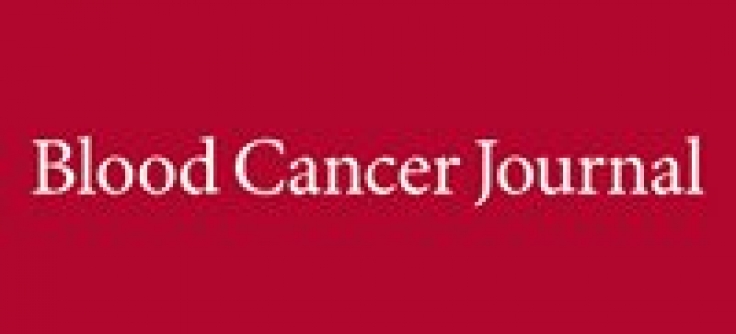

Rozhovor pro UK FORUM: Nová kombinace léčiv prodlužuje život pacientů s leukémií (ukforum.cz)
TZ BIOCEV: Čeští lékaři a vědci prodlouží život lidem s leukémií | Biocev
Kristýna Pimková: Quantitative analysis of redox proteome
Quantitative analysis of redox proteome reveals oxidation-sensitive protein thiols acting in fundamental processes of developmental hematopoiesis. Pimkova K, Jassinskaja M, Munita R, Ciesla M, Guzzi N, Cao Thi Ngoc P, Vajrychova M, Johansson E, Bellodi C, Hansson J. Redox Biology. Volume 53, July 2022, 102343. ISSN 2213-2317. https://doi.org/10.1016/j.redox.2022.102343. (IF 11.79) [PubMed]

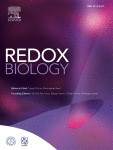
Tomáš Stopka: Circulating microRNAs in Cerebrospinal Fluid and Plasma
Circulating microRNAs in Cerebrospinal Fluid and Plasma: Sensitive Tool for Detection of Secondary CNS Involvement, Monitoring of Therapy and Prediction of CNS Relapse in Aggressive B-NHL Lymphomas. Krsmanovic P, Mocikova H, Chramostova K, Klanova M, Trnkova M, Pesta M, Laslo P, Pytlik R, Stopka T, Trneny M, Pospisil V. Cancers. 2022; 14(9):2305. https://doi.org/10.3390/cancers14092305 (IF 6.6) [link]

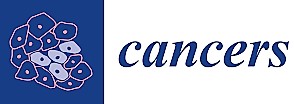
Petra Bašová: Combined Approach to Leukemic Differentiation
Combined Approach to Leukemic Differentiation Using Transcription Factor PU.1-Enhancing Agents. Bašová P, Paszeková H, Minařík L, Dluhošová M, Burda P, Stopka T. Int J Mol Sci. 2022 Jun 16;23(12):6729. doi: 10.3390/ijms23126729. (IF 5.9) [PubMed]


Shefali Thakur: Chromatin remodeler Smarca5
Chromatin Remodeler Smarca5 Is Required for Cancer-Related Processes of Primary Cell Fitness and Immortalization. Thakur S, Cahais V, Turkova T, Zikmund T, Renard C, Stopka T, Korenjak M, Zavadil J. Cells 2022, 11,808. https://doi.org/10.3390/cells11050808 (IF 6.6) [PDF]

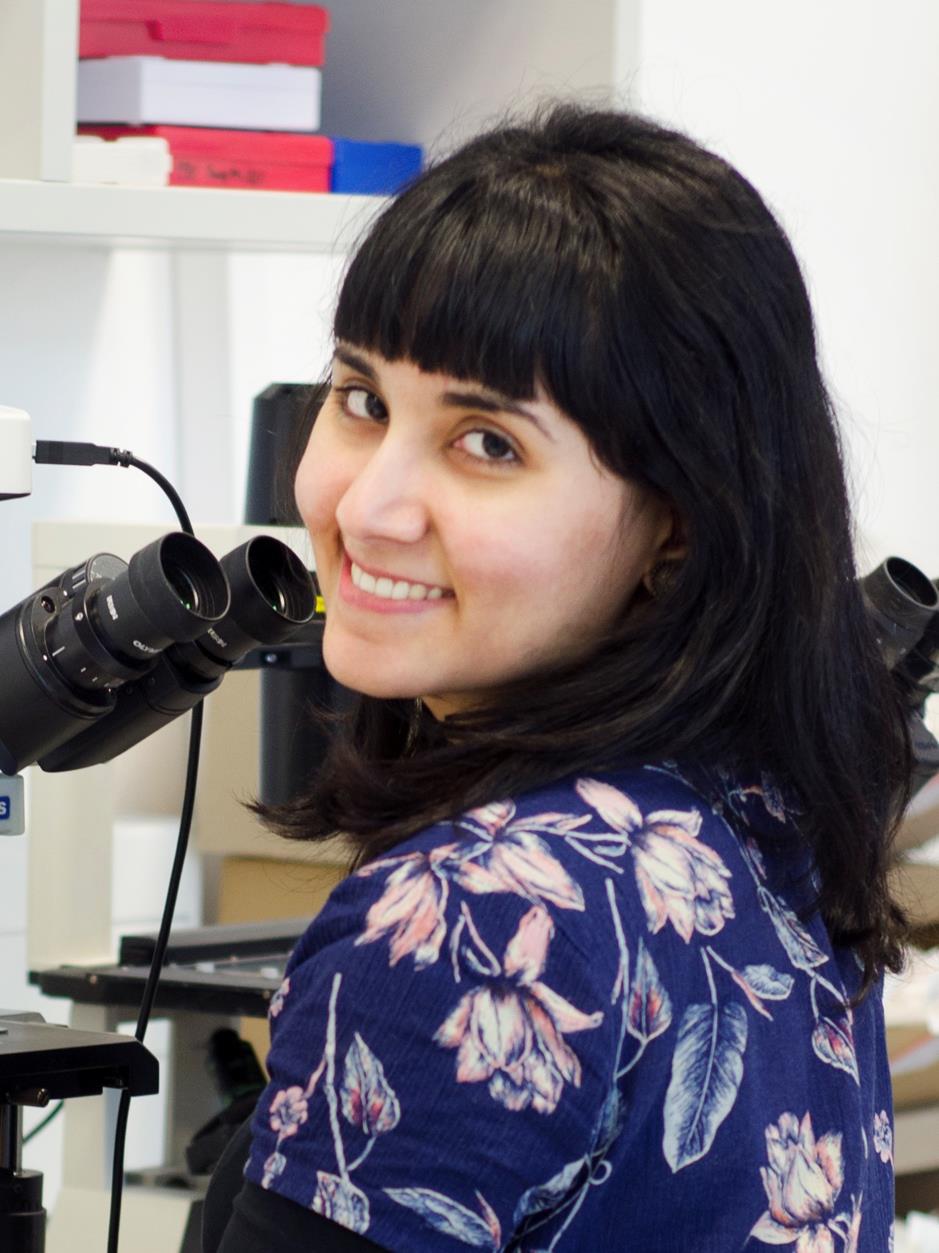
Kristýna Pimková: Peroxiredoxin 6


Ľubomír Minařík: Analysis of 5-Azacytidine Resistance
Analysis of 5-Azacytidine Resistance Models Reveals a Set of Targetable Pathways. Minařík L, Pimková K, Kokavec J, Schaffartziková A, Vellieux F, Kulvait V, Daumová L, Dusilková N, Jonášová A, Vargová KS, Králová Viziová P, Sedláček R, Zemanová Z, Stopka T. Cells. 2022; 11(2):223. https://doi.org/10.3390/cells11020223. (IF 6.6) [PDF]

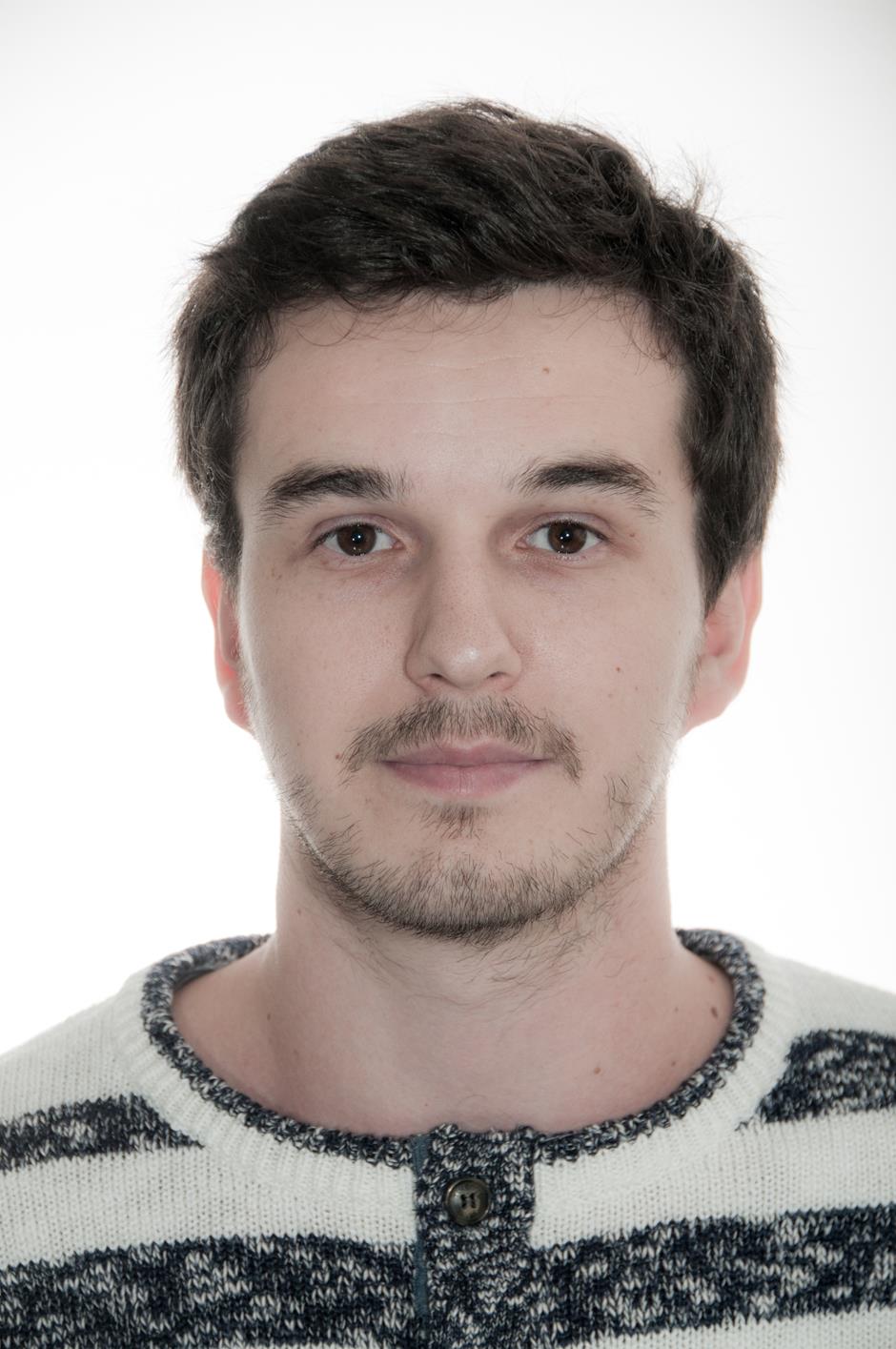
Pavel Čabart: Universal Promoter Scanning
Universal promoter scanning by Pol II during transcription initiation in Saccharomyces cerevisiae. Qiu C, Jin H, Vvedenskaya I, Llenas JA, Zhao T, Malik I, Visbisky AM, Schwartz SL, Cui P, Čabart P, Han KH, Lai W, Metz RP, Johnson CD, Sze SH, Pugh BF, Nickels BE & Kaplan, CD (2020). Genome biology, 21(1), 132. https://doi.org/10.1186/s13059-020-02040-0. (IF 14.028) [PubMed] (131)

Tomáš Zikmund - Helena Paszeková: Loss of ISWI ATPase SMARCA5 (SNF2H)
Loss of ISWI ATPase SMARCA5 (SNF2H) in Acute Myeloid Leukemia Cells Inhibits Proliferation and Chromatid Cohesion. Zikmund T, Paszekova H, Kokavec J, Kerbs P, Thakur S, Turkova T, Tauchmanova P, Greif PA, Stopka T. Int J Mol Sci. 2020;21(6):E2073. Published 2020 Mar 18.doi:10.3390/ijms21062073. (IF 4.183) [PubMed]



Tomáš Stopka: Aberrantly elevated suprabasin
Aberrantly elevated suprabasin in the bone marrow as a candidate biomarker of advanced disease state in myelodysplastic syndromes. Pribyl M, Hubackova S, Moudra A, Vancurova M, Polackova H, Stopka T, Jonasova A, Bokorova R, Fuchs O, Stritesky J, Salovska B, Bartek J, Hodny Z. [published online ahead of print, 2020 Jul 21]. Mol Oncol. 2020;10.1002/1878-0261.12768. doi:10.1002/1878-0261.12768. (IF 6.574) [PubMed]
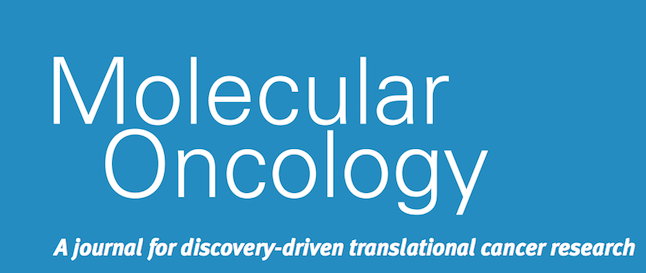

Tomáš Stopka: Chromatin remodeler Snf2h
The chromatin remodeler Snf2h is essential for oocyte meiotic cell cycle progression. Zhang C, Chen Z, Yin Q, Fu X, Li Y, Stopka T, Skoultchi AI, Zhang Y. Genes Dev. 2020 Jan 9. doi: 10.1101/gad.331157.119. (IF 8.998) [Pubmed]


Ľubomír Minařík: Azacitidine Switch to Lenalidomide
Azacitidine Switch to Lenalidomide Eradicated
the TP53/ CDKN2A Co-Mutated Clone and Induced Long-Term Erythroid Response in
Del(5q) MDS. Minarik L, Zemanova Z, Kulvait V, Dluhosova M, Jonasova A and
Stopka T. Ann Hematol Oncol. 2019; 6(1): 0000. [PDF] (IF 2.219)

Tomáš Stopka: MDS News
Randomizovaná otevřená akademická studie: srovnání standardního podání azacytidinu oproti azacytidinu s preinkubací G-CSF u myelodysplastického syndromu vyššího rizika – interim analýza. Stopka T, Minařík Ĺ, Kulvait V, Pešta M, Schaffartziková A, Kislik G, Dusílková N, Zemanová Z, Jonášová A. Myelodysplastic Syndrome News. Listopad 2019. Ročník 7 / číslo 2. [PDF]

Tomáš Zikmund: ISWI ATPase Smarca5
ISWI ATPase Smarca5 Regulates Differentiation of Thymocytes Undergoing b-selection. Zikmund T, Kokavec J, Turkova T, Savvulidi F, Paszekova H, Vodenkova S,
Sedlacek R, Skoultchi AI, Stopka T.. J Immunol. 2019 Jun 15;202(12):3434-3446.
doi: 10.4049/jimmunol.1801684. Epub 2019 May 8. [PubMed] (IF 4.539)


Reputable publication in Haematologica July 2018
BCR-ABL1 mediated miR-150 downregulation through MYC contributed to myeloid differentiation block and drug resistance in chronic myeloid leukemia. Srutova K, Curik N, Burda P, Savvulidi F, Silvestri G, Trotta R, Klamova H, Pecherkova P, Sovova Z, Koblihova J, Stopka T, Perrotti D, Machova Polakova K. Haematologica. 2018 Jul 26. pii: haematol.2018.193086. doi: 10.3324/haematol.2018.193086. [PubMed] (IF 9.09)

Anna Jonášová: Lenalidomide treatment in lower risk myelodysplastic syndromes
Lenalidomide treatment in lower risk myelodysplastic syndromes—The experience of a Czech hematology center. (Positive effect of erythropoietin±prednisone addition to lenalidomide in refractory or relapsed patients). Jonasova A, Neuwirtova R, Polackova H, Siskova M, Stopka T, Cmunt E, Belickova M, Moudra A, Minarik L, Fuchs O, Michalova K, Zemanova Z. Leukemia Research 69 (2018) 12-17. 2018 March 27. https://doi.org/10.1016/j.leukres.2018.03.015 . (IF 2.501) [PDF]

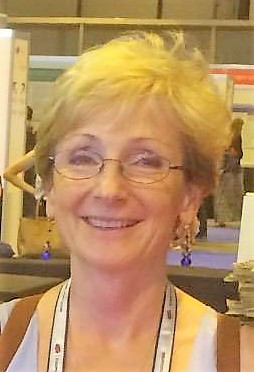
Kamila Polgárová: Somatic mutation dynamics in MDS patients
Somatic mutation dynamics in MDS patients treated with azacitidine indicate clonal selection in patients-responders. Polgarova K, Vargova K, Kulvait V, Dusilkova N, Minarik L, Zemanova Z, Pesta M, Jonasova A and Stopka T. Oncotarget. 2017 Dec 6. (IF 5.168) [PDF] (B, N, H, 131)
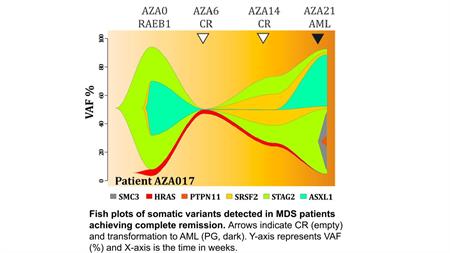
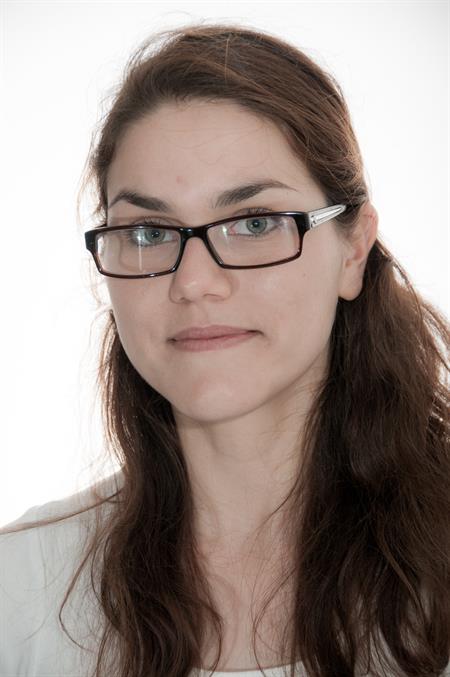
Nina Dusílková & Petra Bašová: Plasma microRNAs in Cutaneous Lymphoma, in press IJMS

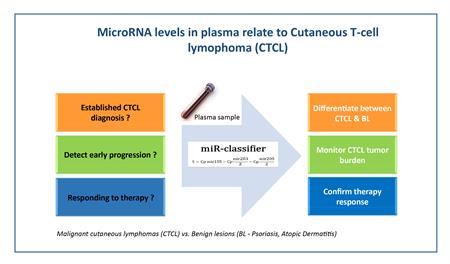

Petra Bašová: Serum microRNAs in Breast Cancer Relapse prediction, in press in IJMS
Prediction Potential of Serum miR-155 and miR-24 for Relapsing Early Breast Cancer. Basova P, Pesta M, Sochor M, Stopka T. Int J Mol Sci. 2017 Oct 10;18(10). pii: E2116. doi: 10.3390/ijms18102116. [PDF] (IF: 3.226)
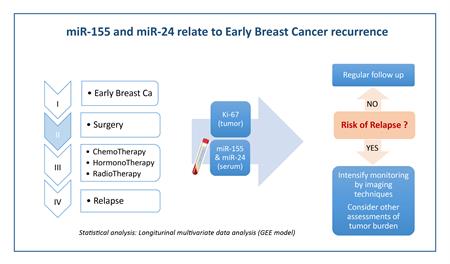

Juraj Kokavec: mouse model of Smarca5 in HSCs
Kokavec J, Zikmund T, Savvulidi F, Kulvait V, Edelmann W, Skoultchi AI, Stopka T. The ISWI ATPase Smarca5 (Snf2h) Is Required for Proliferation and Differentiation of Hematopoietic Stem and Progenitor Cells. Stem Cells. 2017 Jun;35(6):1614-1623. doi: 10.1002/stem.2604. [https] (IF: 5.599)
![]()
Hana Hušková - MS on cancer driver NOW in Oncogene
Karina Vargová - MS on miR-155/miR-150 network in CLL now in press in BCJ
Jarmila Vargová: MARCKS: new therapeutic target in MCL
Vargova J, Vargova K, Dusilkova N, Kulvait V, Pospisil V, Zavadil J, Trneny M, Klener P, Stopka T. Differential expression, localization and activity of MARCKS between mantle cell lymphoma and chronic lymphocytic leukemia. Blood Cancer J. 2016 Sep 23;6(9):e475. doi: 10.1038/bcj.2016.80. [PDF] (IF: 4.502)
ohlasy v tisku:
http://sciencemag.cz/cesti-vedci-na-stope-novym-lekum-proti-lymfomum/
Pavel Burda: addition to BBA, collaborative project with John Strouboulis
Papageorgiou DN, Karkoulia E, Amaral-Psarris A, Burda P, Kolodziej K, Demmers J, Bungert J, Stopka T, Strouboulis J. Distinct and overlapping DNMT1 interactions with multiple transcription factors in erythroid cells: Evidence for co-repressor functions. Biochim Biophys Acta. 2016 Dec;1859(12):1515-1526. doi: 10.1016/j.bbagrm.2016.09.007. [https] (IF: 5.373)

Juraj Kokavec: mouse model of Smarca5 in lens
He S, Limi S, McGreal RS, Xie Q, Brennan LA, Kantorow WL, Kokavec J, Majumdar R, Hou H Jr, Edelmann W, Liu W, Ashery-Padan R, Zavadil J, Kantorow M, Skoultchi AI, Stopka T, Cvekl A. Chromatin remodeling enzyme Snf2h regulates embryonic lens differentiation and denucleation. Development. 2016 Jun 1;143(11):1937-47. doi:
10.1242/dev.135285. [PDF] (IF: 6.462)

Scientia Foundation Award 2013/2014 for Petra Bašová PhD and Karina Vargová PhD
For the year 2013/2014 the Scientia Foundation Award has been awarded to Dr. Petra Bašová and Dr. Karina Vargová, two postdoctoral fellows in the laboratory, for outstanding research publications describing novel epigenetic regulation of transcription factor PU.1 in two different hematologic malignancies.

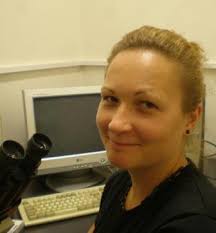
Scientia Foundation award is given annually and represents one of most prestigious awards dedicated for successful PhD graduates in our faculty. Ceremony is planned for June 10, 2014 at 2 p.m. at the academic club, Faustův dům, Karlovo nám. 40.
Reputable ASH2013 presentations in New Orleans
, "Erythroid Transcription Factor GATA-1 Inhibits PU.1 Transcription: Implication For Erythroid Pathogenesis and Blast Transformation In MDS"Session Name: 633. Myelodysplastic Syndromes: Poster I Date: Saturday, December 7, 2013 Presentation Time: 5:30 PM - 7:30 PM Location: Ernest N. Morial Convention Center, Hall E
, "GATA-1-Mediated Transcriptional Regulation Of Erythropoietin Receptor (EpoR) Gene Is Impaired By Downregulation Of Divalent Metal Transporter Dmt1"Session Name: 102. Regulation of Iron Metabolism: Poster II, Date: Sunday, December 8, 2013, Presentation Time: 6:30 PM - 8:30 PM, Location: Ernest N. Morial Convention Center, Hall E
, "Oncogenic Micrornas In Cerebrospinal Fluid and Sera Reflect Therapy Efficacy and Their Reappearance Precedes Clinical Relapse In Primary and Secondary CNS Lymphoma"
Session Name: 622. Non-Hodgkin Lymphoma: Biology, excluding Therapy: Poster I Date: Saturday, December 7, 2013 Presentation Time: 5:30 PM - 7:30 PM Location: Ernest N. Morial Convention Center, Hall G
Scientia Foundation Award 2012/2013 for Nikola Čuřík PhD
Scientia Foundation award is given annually and represents one of most prestigious awards dedicated for successful PhD graduates in our faculty. Ceremony is planned for June 11, 2013 at 2 p.m. at the academic club, Faustův dům, Karlovo nám. 40.
Bolzano Award 2012/2013 for Vít Pospíšil PhD
Bolzano award is given annually by Charles University in Prague and represents one of most prestigious University Awards dedicated for successful postdoctoral fellows.
http://cuni.cz/IFORUM-14022.html
http://iforum.cuni.cz/IFORUM-14024.html
http://www.cuni.cz/UK-381.html
http://www.lf1.cuni.cz/prestizni-bolzanovu-cenu-obdrzeli-tri-mladi-talentovani-vedci
ASH 2012 Atlanta - Selected for presentation
Reputably selected presentations in the Annual American Society of Hematology Meeting 2012 in Atlanta!
• ASH Oral Presentation: et al.: PU.1 and p53 Double Mutant Mice Develop Aggressive AML with Dysplastic Features
Publication Number: 769, Submission ID: 48425, Session Name: 603. Oncogenes and Tumor Suppressors III Session Date: Monday, December 10, 2012 Session Time: 6:15 PM - 7:45 PM Presentation Time: 6:15 PM, Room: Georgia World Congress Center, B207-B208
• ASH Poster Presentation: et al.: Transcription Factor CTCF Inhibits Effects of 5-Azacitidine in MDS/AML Cells
Publication Number: 3848, Submission ID: 48395, Session Name: 633. Myelodysplastic Syndromes: Poster III, Date: Monday, December 10, 2012, Presentation Time: 6:00 PM - 8:00 PM, Location: Georgia World Congress Center, Hall B1-B2
• ASH Poster Presentation: et al.: Divalent Metal Transporter 1 (DMT1) Regulates EPO Receptor Gene Expression Via GATA-1
Publication Number: 991, Submission ID: 48386, Session Name: 102. Regulation of Iron Metabolism: Poster I, Date: Saturday, December 8, 2012, Presentation Time: 5:30 PM - 7:30 PM, Location: Georgia World Congress Center, Hall B1-B2
Certificate of Merit 2012 (by IGA CR)
Grant Committee at the Ministry of Health awarded the grant entitled "Investigation of pathophysiology of human leukemias/lymphomas during manipulation of oncogenic microRNAs. (2009-2011 #NS10310-3)" by Certificate of Merit 2012.
The authors of the grant stated in original application: "We believe that our proposal has indeed key mechanistic implications for pathogenesis of myeloid and B-lymphoid malignancies that involve newly discovered miR-155 and PU.1 negative regulatory loop. Since this mechanism exists in the studied albeit not all hematologic malignancies it sugests that we are exploring very important mechanism dysregulated in and connecting these relatively heterogenous disease entities. Our proposed work combines both experimental model systems as well as the primary patient samples and connects both basic science and clinical medicine. As chronic lymphocytic leukemia belongs to most frequent leukemias and both leukemias and lymphomas account nearly hundred thousand new cases annualy in the EU we strongly defend our view that molecular understanding of pathogenesis of these diseases belongs to the priority and indeed of general interest."
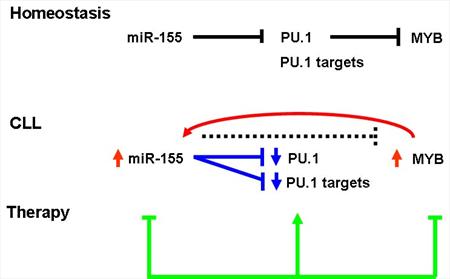
Major results of the grant are summarized in the citations:
-
Vargova K, Curik N, Burda P, Basova P, Kulvait V, Pospisil V, Savvulidi F, Kokavec J, Necas E, Berkova A, Obrtlikova P, Karban J, Mraz M, Pospisilova S, Mayer J, Trneny M, Zavadil J, Stopka T. MYB transcriptionally regulates the miR-155 host gene in chronic lymphocytic leukemia. Blood. 2011 Apr 7;117(14):3816-25. IF 10,5; [PubMed]
-
Pospisil V, Vargova K, Kokavec J, Rybarova J, Savvulidi F, Jonasova A, Necas E, Zavadil J, Laslo P, and Stopka T. Epigenetic silencing of the oncogenic miR-17-92 cluster during PU.1-directed macrophage differentiation. EMBO J. 2011 Sep 6. IF 10,1; [PubMed]

